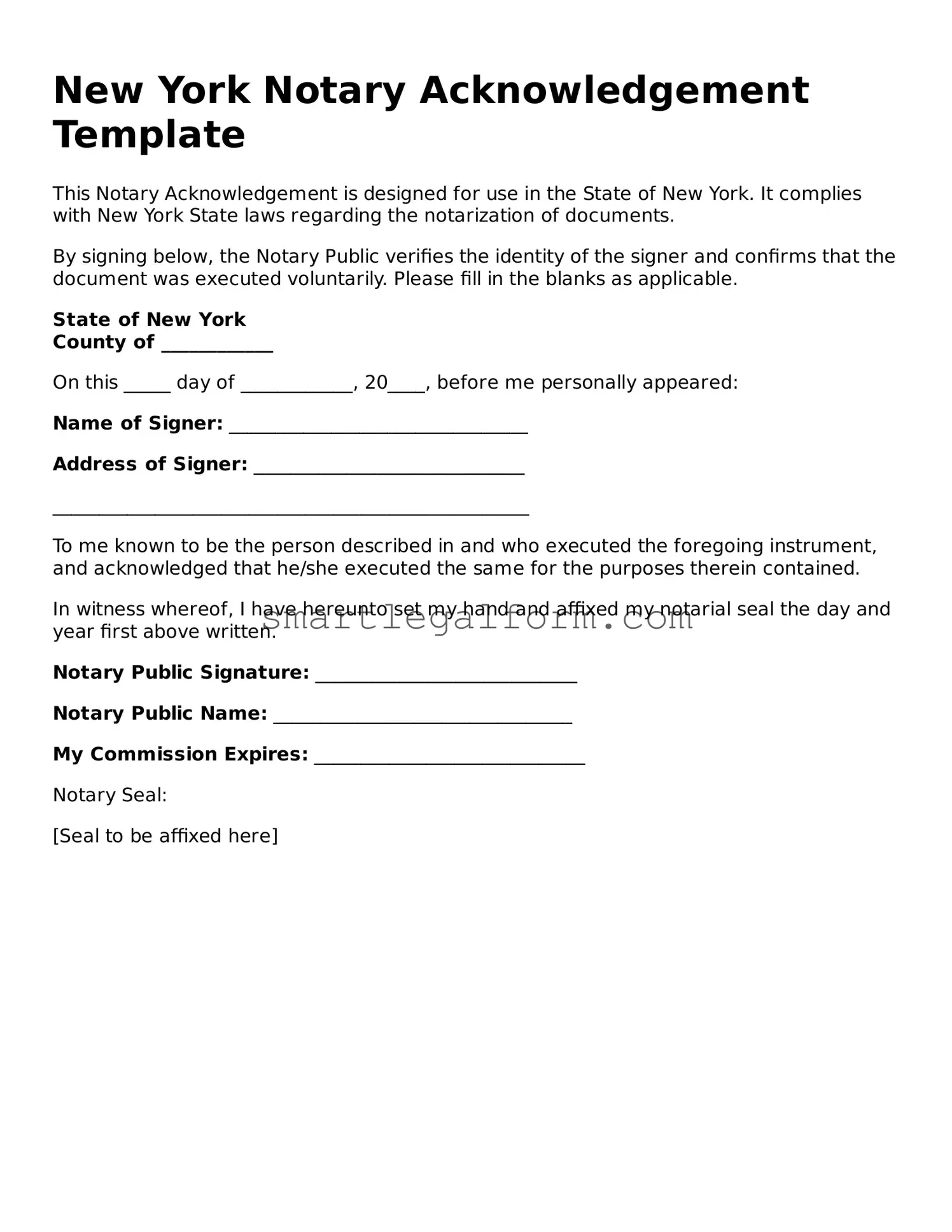New York Notary Acknowledgement Template
This Notary Acknowledgement is designed for use in the State of New York. It complies with New York State laws regarding the notarization of documents.
By signing below, the Notary Public verifies the identity of the signer and confirms that the document was executed voluntarily. Please fill in the blanks as applicable.
State of New York
County of ____________
On this _____ day of ____________, 20____, before me personally appeared:
Name of Signer: ________________________________
Address of Signer: _____________________________
___________________________________________________
To me known to be the person described in and who executed the foregoing instrument, and acknowledged that he/she executed the same for the purposes therein contained.
In witness whereof, I have hereunto set my hand and affixed my notarial seal the day and year first above written.
Notary Public Signature: ____________________________
Notary Public Name: ________________________________
My Commission Expires: _____________________________
Notary Seal:
[Seal to be affixed here]
